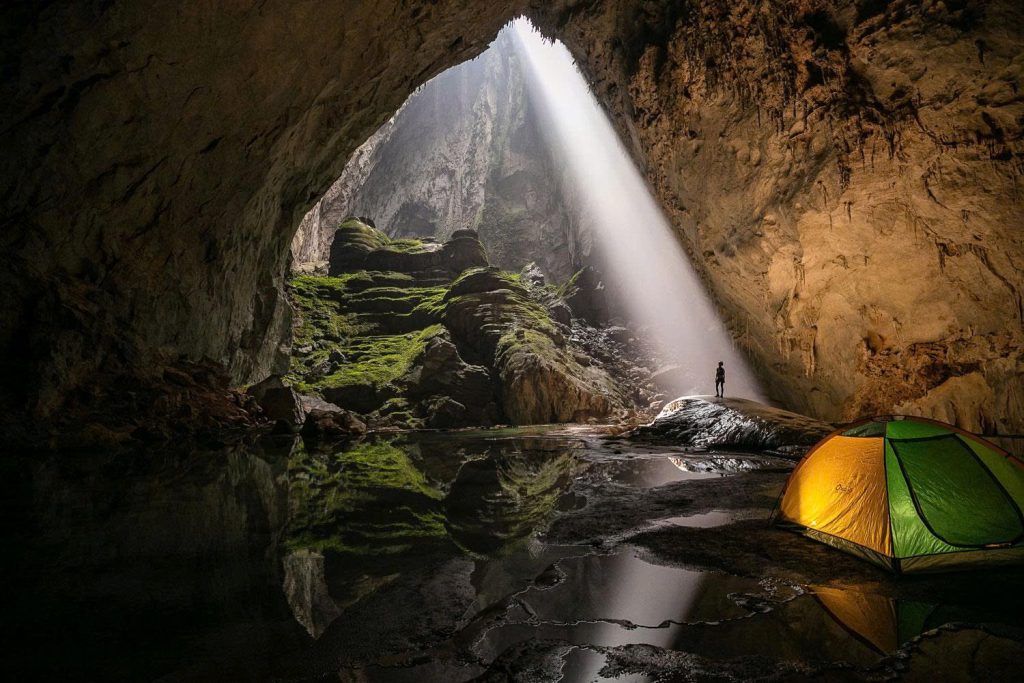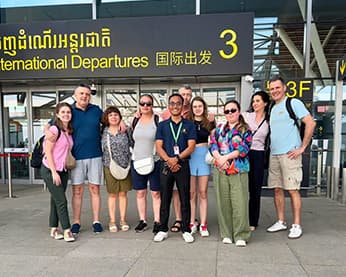Phong Nha-Ke Bang National Park: Vietnam’s Cave Kingdom
As you approach Phong Nha-Ke Bang National Park, the landscape unfolds like a living jungle tapestry. It’s as if nature has spilled a vast bucket of green over the limestone peaks, with sheer cliffs and dark openings hinting at the hidden world beneath. These shadows mark the entrances to one of Earth’s most spectacular cave systems.
Located in the western Bo Trach district of Quang Binh province, near the Laos border, Phong Nha-Ke Bang was recognized as a UNESCO World Heritage Site in 2003. Nestled between the northern and central Annamite Mountains, the park is part of one of Asia’s largest continuous limestone karst zones, which also stretches into Hin Namno National Protected Area in Laos.
A World Beneath the Forest
The park’s landscape is dominated by sharp karst ridges that rise up to 400 meters, interspersed with narrow valleys, thick jungle, and patches of ancient igneous rock. But the true magic lies underground.
Though known for generations by the local Ban Doong ethnic group, the park’s caves only gained global attention in the 1990s, when experts from the British Caving Association began systematic exploration. They quickly realized that this region is home to over 300 caves, many still unmapped and unexplored.
One of the most accessible and awe-inspiring is Paradise Cave – a 31-kilometer tunnel adorned with towering stalagmites and stalactites that resemble a natural cathedral. The first kilometer is open to the public, accessible via wooden walkways that guide visitors through its illuminated chambers.
Nearby, Phong Nha Cave is only reachable by boat. As you glide along the Son River, you’ll pass peaceful rice fields and water buffalo before entering the cave’s narrow opening. Once inside, the boat engine is cut, and you silently drift through glittering caverns lit from within.
Adventure Awaits: Deeper Caves and Jungle Treks
While the more accessible caves are stunning, true adventurers can go further. A two-day guided jungle trek leads to Hang En, the world’s third-largest cave. This vast cavern has its own microclimate, beach, and emerald pool. At night, you’ll camp inside the cave itself, falling asleep to the sounds of thousands of nesting swallows overhead.
Even more remote is Hang Tien Cave, accessible on a four-day jungle trek. And for the ultimate caving experience, fit and lucky travelers can apply to explore Son Doong Cave – the largest cave in the world. Inside are towering stalagmites, jungle skylights, and entire weather systems – a world within a world.

Inside Son Doong Cave, Vietnam
For the Leisure Traveler
Phong Nha isn’t just for hardcore trekkers. Above ground, you can relax at a riverside café, swim in the cool waters of the Son River, or explore the countryside by kayak or bicycle. Accommodations are modest but comfortable. One of the best-known is Chay Lap Farmstay, a community-run retreat with a pool and panoramic views of the limestone karsts.
Best Time to Visit Phong Nha-Ke Bang
- April to August: Dry season, ideal for cave visits and jungle trekking. Be prepared for hot and humid weather, especially in July and August, when temperatures can reach 40°C (104°F).
- December to March: Cooler and less humid, great for general travel, but chilly at night – especially if camping.
- Avoid: September to early December, the rainy season, when caves often close due to flooding.
Speak to one of our local experts

Vietnam ⟩ Chau Doc
Vietnam ⟩ Yok Don National Park
Vietnam ⟩ Son Tra Peninsula Nature Reserve
Vietnam ⟩ Northern Vietnam
Vietnam ⟩ Hai Phong
Vietnam ⟩ Ba be National Park
Vietnam ⟩ Chu Yang Sin National Park
Vietnam ⟩ Nui Chua National Park
Vietnam ⟩ Ba Vi National Park
Vietnam ⟩ Hoang Lien National Park



